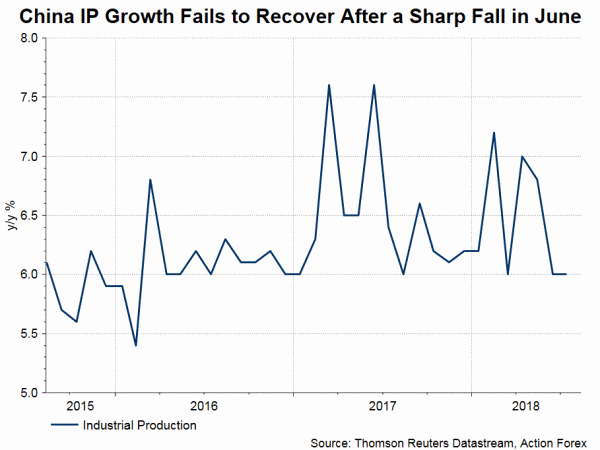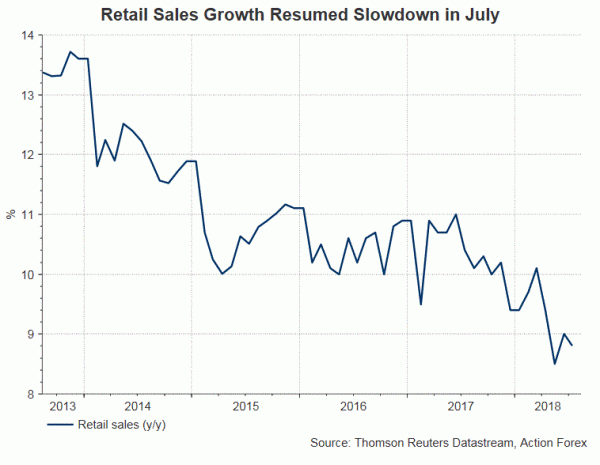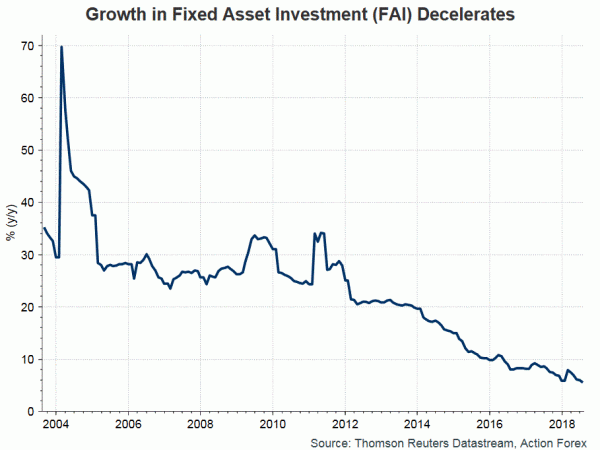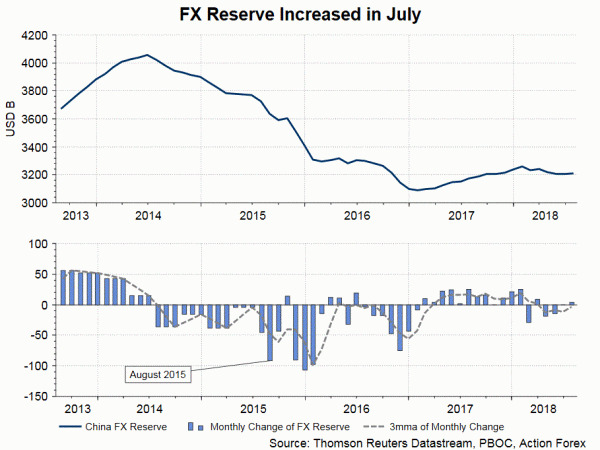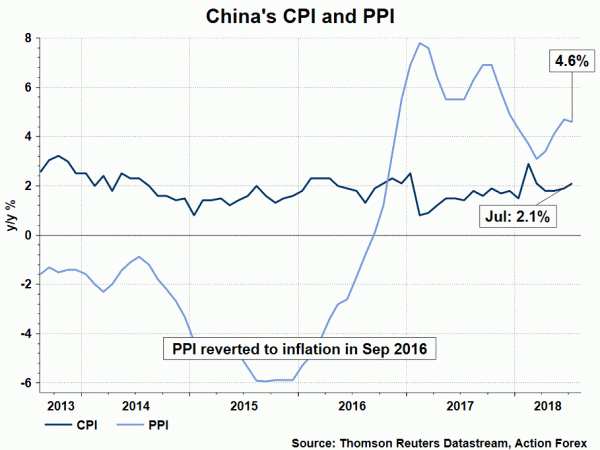July’s data showed that China’s economic growth continued to decelerate although the government has loosened its policy. All key economic activity indicators missed expectations for the month.
Industrial production grew +6% y/y, after a sharp slowdown in June and missing consensus of +6.3%. The moderation has been revealed in the PMI reports released weeks ago. On the official report, manufacturing PMI fell to 51.2 in July, from 51.5 a month ago. The decline in most sub-indices signaled that the weakening in manufacturing activities was broad-based. The one reflecting industrial production was the “production” sub- index, which fell to 53 from 53.6 in June. Survey small and medium businesses, the Marikit/ Caixin reported that the manufacturing PMI dropped to 50.8 in July, from 51 a month ago. The “output” sub-index also dropped during the month.
Growth in retail sales slowed further to +8.8% y/y, resuming the deceleration after a brief pick up in June (+9%). The market had anticipated an improvement to 9.3%.
Urban fixed asset investment expanded +5.5% y/y in the first 7 months of the year, slowing from +6% in the January- June period. The market had anticipated a growth +6% in July.
Valuation Effect Explains 40% of Increase in FX Reserve
China’s FX reserve increased +US$ 5.82B to US$ 3118B in July. While the headline reading was in contrast with the expectation that the government might have sold FX assets to defend the recent sharp fall of renminbi (Chinese yuan). Some might have suggested that the government indeed has purchased FX assets to facilitate depreciation of its currency. This tactic can be useful for Chinese exports amidst intensification of trade conflict. We believe that the July increase in FX reserve was modest and a part of it was driven by valuation effect.
Calculation of China’s macroeconomic data is never transparent under the authoritarian CCP government. Similarly, the composition of Chinese FX reserve is confidential. However, it is possible get an estimate as other countries’ central banks report foreign holdings of their assets.
It is generally estimated that about 62% of it was composed of US dollar. Meanwhile, about 21% is in euro, 5% in pound, 3% in Japanese yen, 2% in each of Aussie and Loonie, and the rest are other currencies. During the period, USD index slipped -0.2%, thus inflating the FX reserve by about US$ 2.38B.
Regarding the increase in FX reserve in spite of renminbi depreciation, the government likely finds it unnecessary for now to intervene aggressively in the market as capital outflow is not severe. Indeed, many of the capital control measures implemented after the 2015 currency reform remain in place.
We believe the chance of intervention to defend renminbi is still high if renminbi weakens further, as the trade conflict heightens and the growth of economic activities continues to slow.
Limited Impact of Tariff on Inflation
Headline CPI in China accelerated to +2.1% y/y in July, from +1.9% in the prior month. The market had anticipated a weaker figure of +2%. Core CPI, excluding food and energy prices, steadied at +1.9%. The food price index climbed higher to +0.5% y/y, while non-food prices picked up to 2.4%, from +2.2% in June.
On August 3, China announced to impose tariffs on US$ 60B of US goods, with tariffs ranging from 5-25%. These are retaliatory measures after Trump’s order to consider raising tariffs on US$ 200B of Chinese goods. The impacts on inflation should be limited as many US goods subject to tariff are not included in the CPI basket. Moreover, China has reduced tariffs on a number of imports from non-US countries from July 1 . This might offset the increase in import prices from the US.
PPI eased to +4.6% y/y, from +4.7% in June. However, this also beat consensus of +4.4%. Indeed, the slowdown in PPI is consistent with the ease in the manufacturing PMI input price.




